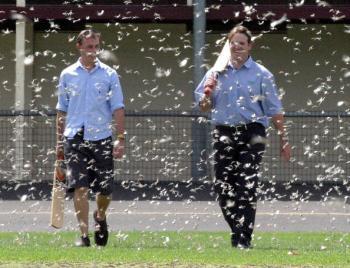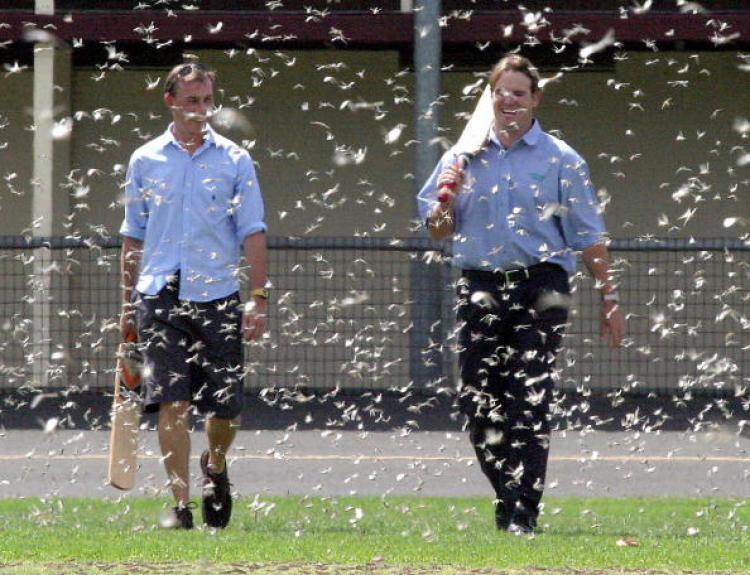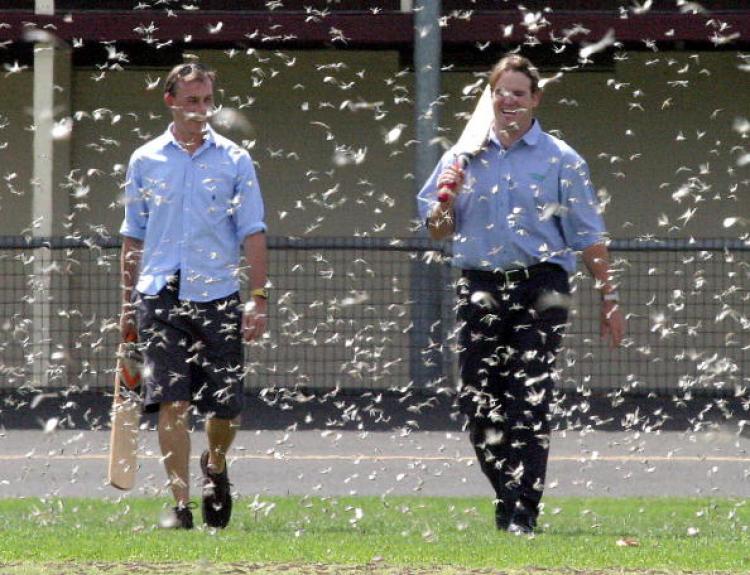Huge colonies of locusts in New South Wales (NSW) have prompted a 10 day aerial spraying regime in an attempt to bring the destructive insects under control, AAP reported.
The NSW government says it has sufficient chemicals to deal with 4,500 square kilometres. With more than 1000 bands of the pests identified, the outbreak is too large for landholders to deal with from the ground, plus access is an issue in various areas.
“We have a narrow window of around ten days to treat banding locusts before they take to the wing and become virtually uncontrollable,” said Steve Whan, NSW Primary Industries Minister, in a statement yesterday.
So far 19 spots have been targeted in the region of Bourke and Brewarrina, over an area of about 300 square kilometres. Other areas, including a 450 square kilometre region in Carinda, are next in line as part of a rapid spray regime before the locusts begin to swarm.
The population outbreaks followed warnings provided in a September bulletin on the Department of Agriculture, Fisheries and Forestry’s website.
The government department predicted heavy infestations of locust hatchlings in parts of NSW, as well as northern Victoria and eastern South Australia.
As expected, last year’s heavy summer and autumn inland rainfall favoured swarming in April followed by southern migrations to the affected areas where the adult pests bred.
Despite control efforts earlier this year, the number of insects is now building up rapidly as spring temperatures rise.
Farmers in parts of Victoria and South Australia are preparing for similar outbreaks after mass hatchings earlier this month. Yesterday almost an 70 square kilometres in the Flinders Ranges, were successfully sprayed, with a similar area to be covered again today.
The NSW government says it has sufficient chemicals to deal with 4,500 square kilometres. With more than 1000 bands of the pests identified, the outbreak is too large for landholders to deal with from the ground, plus access is an issue in various areas.
“We have a narrow window of around ten days to treat banding locusts before they take to the wing and become virtually uncontrollable,” said Steve Whan, NSW Primary Industries Minister, in a statement yesterday.
So far 19 spots have been targeted in the region of Bourke and Brewarrina, over an area of about 300 square kilometres. Other areas, including a 450 square kilometre region in Carinda, are next in line as part of a rapid spray regime before the locusts begin to swarm.
The population outbreaks followed warnings provided in a September bulletin on the Department of Agriculture, Fisheries and Forestry’s website.
The government department predicted heavy infestations of locust hatchlings in parts of NSW, as well as northern Victoria and eastern South Australia.
As expected, last year’s heavy summer and autumn inland rainfall favoured swarming in April followed by southern migrations to the affected areas where the adult pests bred.
Despite control efforts earlier this year, the number of insects is now building up rapidly as spring temperatures rise.
Farmers in parts of Victoria and South Australia are preparing for similar outbreaks after mass hatchings earlier this month. Yesterday almost an 70 square kilometres in the Flinders Ranges, were successfully sprayed, with a similar area to be covered again today.






